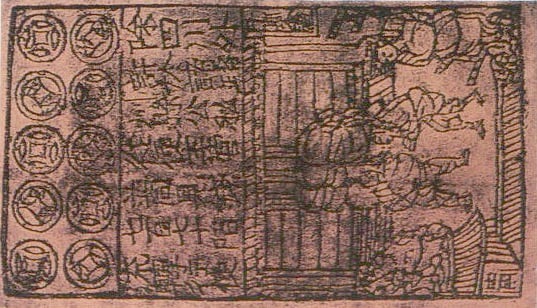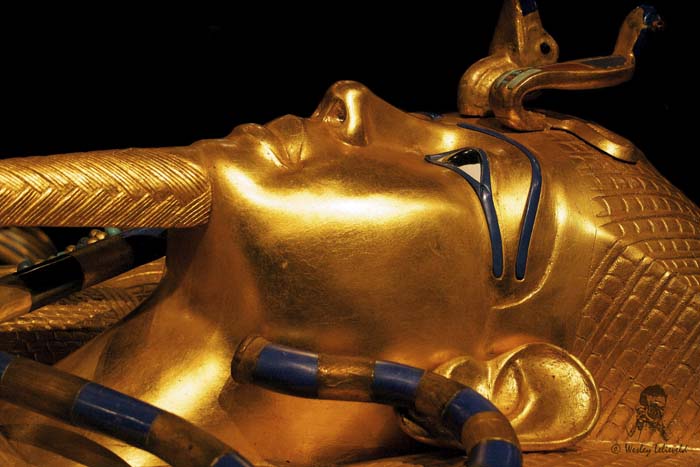Chinese Economy: The Introduction of Paper Money
Following up on World Systems Theory: Core, Periphery, Semi-Periphery, this week we’ll discuss the Chinese Economy from the standpoint of paper money, which was introduced by merchants as early as the Tang dynasty to avoid carrying strings of coins long distances.
---
China was first united under a single imperial state under Qin Shi Huang in 221 BCE. He was the founder of the Qin dynasty and the first emperor of a unified China. All Chinese lands are said to have been unified under one ruler, and in the course of conquest, Qin had standardized trade, communication, currency, and language.
Shortly thereafter, China entered its classical age with the Han dynasty, marking a critical period. The dominant Chinese ethnic group is known as Han Chinese.
Han technology can be considered on par with that of the contemporaneous Roman Empire: mass production of paper aided the proliferation of written documents.
The Song dynasty, which ruled China from 960 to 1279 CE, was considered to be the golden age of great advancements in science and technology, thanks to scholar-officials such as Su Song (1020–1101) and Shen Kuo (1031–1095). Inventions such as the hydro-mechanical astronomical clock, the first continuous and endless power-transmitting chain, woodblock printing and paper money were all invented during the Song dynasty.
Paper money was introduced in the late 10th century during the rule of the Song dynasty initiated by merchants to avoid having to carry thousands of strings of coins long distances. A sophisticated system of production, issue and withdrawal was gradually developed during the Mongol Yuan dynasty (1260-1368).
For centuries, the basic unit of currency in China was the bronze or copper coin with a hole in the center for stringing. Large transactions were calculated in terms of strings of coins, but given their weight these were cumbersome to carry long distances. Merchants in late Tang times (~ 900 CE) started trading receipts from deposit shops where they had left money or goods.
In the 1020s the government took over the currency production system, distributing the world’s first government-issued paper money.
The Jiaozi, said to have been the oldest paper currency used in China and the world, was first used in present-day Sichuan. They were issued to replace the heavy coins that circulated at the time. These early Jiaozi were issued in high denominations such as 1000 qiàn, which was equal to one thousand coins that of security.
While the Great Wall of China was built to keep northern forces from raiding China, under the leadership of Genghis Khan and, later, his grandson, Kublai Khan, Mongol nomads overran the Chinese armies and ushered in the Yuan Dynasty of China. The Mongols increased the amount of paper money in circulation and guaranteed the value of that paper money in precious metals.
The Chinese medieval paper money system suffered from severe inflation waves and went through several profound monetary reforms. The largest inflation was caused by war at the end of the 14th century during the period of the Ming dynasty. Paper money circulation was stopped in the early 17th century at the decline of the Ming dynasty period and reintroduced only in the mid 19th century.
In 2024, China will no longer be the most populous country in the world, ceding the title to India and Chinese currency is a hot topic. Not only does it define the state of one of the world's biggest economic superpowers, but it is also central to one of the most debated issues involving China today with regards to it perceived policy of artificial undervaluation of its currency against the U.S. dollar to give its exports an unfair price advantage.
The Chinese Yuan (CNY) and Renminbi (RMB) are interchangeable terms for China's currency.
Every day the People’s Bank of China (PBOC) sets a midpoint value against the U.S. dollar, based on previous trading sessions and movements in international currency markets. The price of the yuan is allowed to trade within 2% of that price.
Today, the RMB is one of the top-five most-used currencies, in addition to the U.S. dollar, euro, yen, and British pound.
---
Ready to invest in digital marketing for your business? Let's work together to create a plan designed around optimizing your business directory listings, while incorporating search engine optimization (SEO), content marketing, search engine marketing, lead generation and website design to ensure that your accounting practice is optimized to help you reach your goals.



